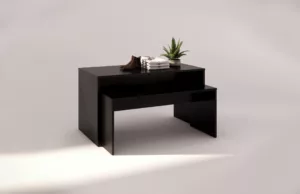Many retailers confuse visual merchandising with interior decorating, thinking that if their shop looks nice, customers will automatically buy from it. However this is not always true, and in some situations (for instance, a discount store) a deliberately cluttered environment increases sales. Intelligently displaying products in a way that will make it easy for your customers to decide to buy them is visual merchandising.

Learn what triggers your target market’s buying decision and display your items in accordance with this. Good visual merchandising encourages a customer through the buying process, while retail display is simply to entertain, inspire or attract customers to the products for sale. In fact you could say that retail display is a step in the visual merchandising sequence.
The Golden Rule:
Visual Merchandising must increase sales to be effective
There are 5 sub-objectives of visual merchandising and display, all pointing towards the most important VM goal of increased sales. We have listed them here in order of time
- Attracting Attention: The display must be set up in a way to visually attract and to hold the attention of the shopper.
- Logical Arrangement: Items to be logically arranged, so if the item which attacts attention first is not exactly what the shopper is looking for, they should logically be able to find similar items nearby
- Ease of Access: A shopper should be able to access the products easily, for closer inspection, or to gain other sensory input. For instance, the products may be able to be touched (such as clothes) smelt (Perfume), or otherwise interacted with.
- Implied Indispensability: The products should be displayed in a way that customers can imagine themselves using them, or in the best displays, a customer will begin to feel they have to use them. The use of vignettes is key here.
- Remains Memorable: Visual merchandising can work in a subtle way to ensure the branding carries through certain themes or emotions to customers. This sort of VM works to create an experience in store, over and above an area to display products for sale.
Look critically at your store and why you have displayed your products in the way you have. Is it because it was easy? Is it because it looks good? Or is it because you sell the most this way? Only the last reason is good enough to be considered Visual Merchandising.






